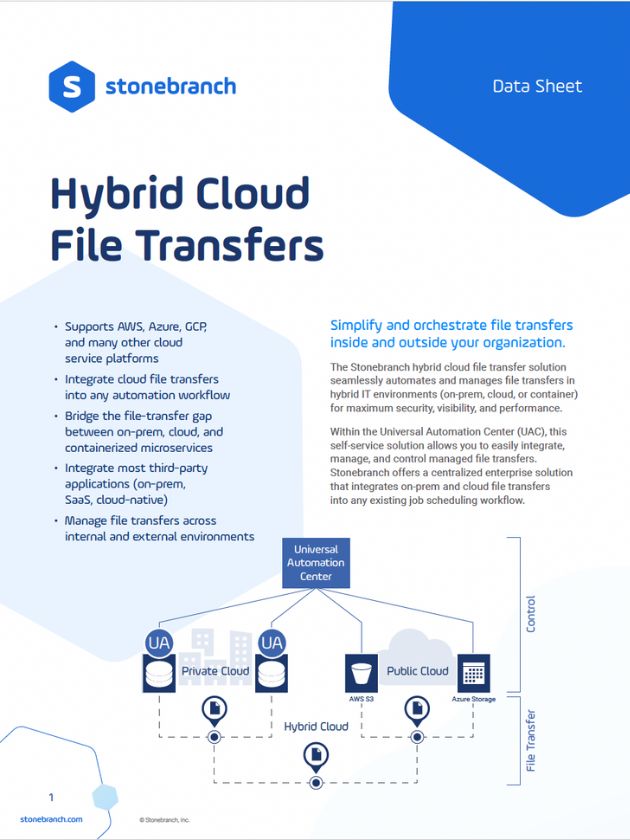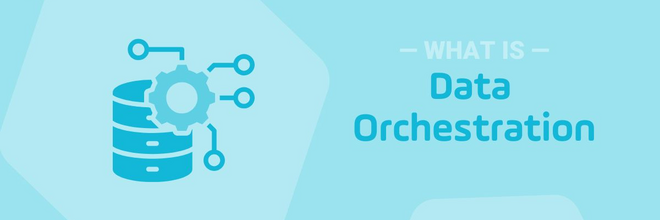Hybrid Cloud File Transfers — Seamlessly Integrate Your Cloud File Transfers Into Your Scheduling Workflows
Manage file transfers in hybrid IT environments (on-prem, cloud, and container) with no ramp-up time or cost-intensive hardware investments.

Gain control over your hybrid IT environment while you improve security, visibility, and performance. The hybrid cloud file transfer solution within the Stonebranch Universal Automation Center allows you to centrally manage and move files across your local server (Windows, Linux), mainframe (z/Linux, z/OS) and Storage Area Network (SAN), as well as your AWS, Azure, and Google Cloud storage services. Download the datasheet to learn more.
Key features:
- Support Amazon S3, Azure and Google Cloud web-based scheduling
- Coordinate cloud file transfers in any automation workflow
- Seamlessly integrate mainframe/Linux and Windows file transfers
- Integrate third-party applications




